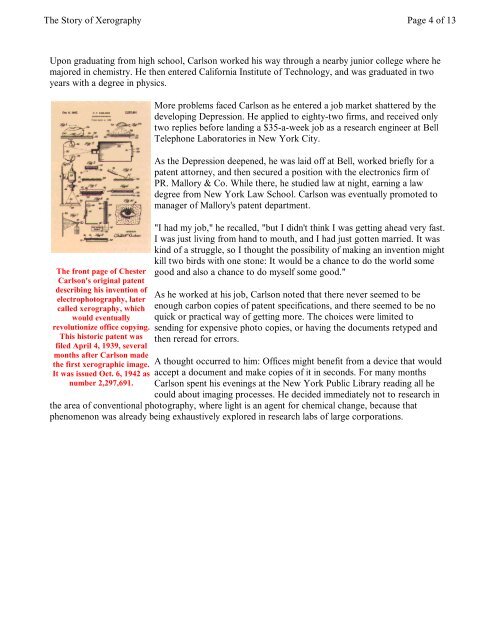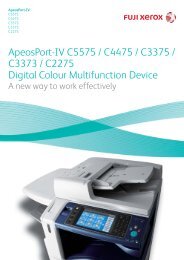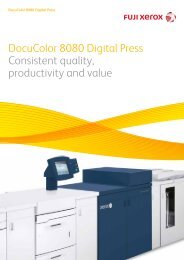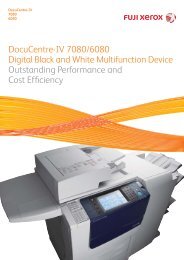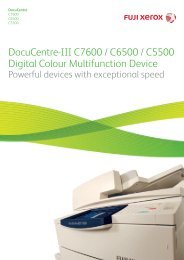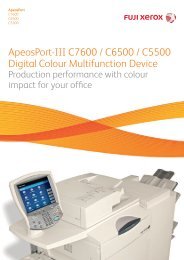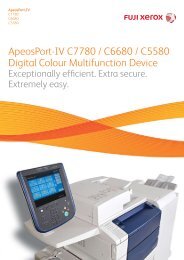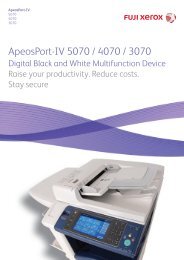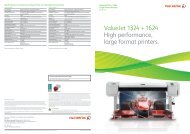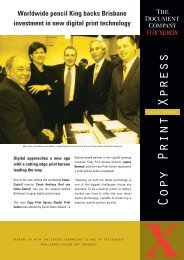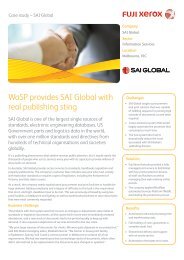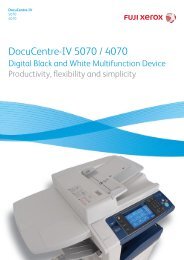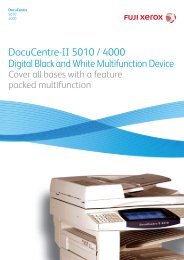The Story of Xerography - Fuji Xerox
The Story of Xerography - Fuji Xerox
The Story of Xerography - Fuji Xerox
You also want an ePaper? Increase the reach of your titles
YUMPU automatically turns print PDFs into web optimized ePapers that Google loves.
<strong>The</strong> <strong>Story</strong> <strong>of</strong> <strong>Xerography</strong> Page 4 <strong>of</strong> 13<br />
Upon graduating from high school, Carlson worked his way through a nearby junior college where he<br />
majored in chemistry. He then entered California Institute <strong>of</strong> Technology, and was graduated in two<br />
years with a degree in physics.<br />
<strong>The</strong> front page <strong>of</strong> Chester<br />
Carlson's original patent<br />
describing his invention <strong>of</strong><br />
electrophotography, later<br />
called xerography, which<br />
would eventually<br />
revolutionize <strong>of</strong>fice copying.<br />
This historic patent was<br />
filed April 4, 1939, several<br />
months after Carlson made<br />
the first xerographic image.<br />
It was issued Oct. 6, 1942 as<br />
number 2,297,691.<br />
More problems faced Carlson as he entered a job market shattered by the<br />
developing Depression. He applied to eighty-two firms, and received only<br />
two replies before landing a $35-a-week job as a research engineer at Bell<br />
Telephone Laboratories in New York City.<br />
As the Depression deepened, he was laid <strong>of</strong>f at Bell, worked briefly for a<br />
patent attorney, and then secured a position with the electronics firm <strong>of</strong><br />
PR. Mallory & Co. While there, he studied law at night, earning a law<br />
degree from New York Law School. Carlson was eventually promoted to<br />
manager <strong>of</strong> Mallory's patent department.<br />
"I had my job," he recalled, "but I didn't think I was getting ahead very fast.<br />
I was just living from hand to mouth, and I had just gotten married. It was<br />
kind <strong>of</strong> a struggle, so I thought the possibility <strong>of</strong> making an invention might<br />
kill two birds with one stone: It would be a chance to do the world some<br />
good and also a chance to do myself some good."<br />
As he worked at his job, Carlson noted that there never seemed to be<br />
enough carbon copies <strong>of</strong> patent specifications, and there seemed to be no<br />
quick or practical way <strong>of</strong> getting more. <strong>The</strong> choices were limited to<br />
sending for expensive photo copies, or having the documents retyped and<br />
then reread for errors.<br />
A thought occurred to him: Offices might benefit from a device that would<br />
accept a document and make copies <strong>of</strong> it in seconds. For many months<br />
Carlson spent his evenings at the New York Public Library reading all he<br />
could about imaging processes. He decided immediately not to research in<br />
the area <strong>of</strong> conventional photography, where light is an agent for chemical change, because that<br />
phenomenon was already being exhaustively explored in research labs <strong>of</strong> large corporations.


